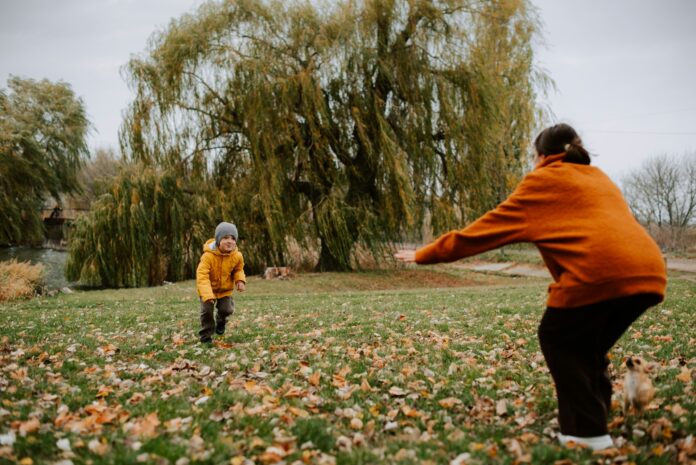In an age of overtourism and Instagram hotspots, true hidden gems have become increasingly rare. Yet across Europe, there remain extraordinary places that have resisted the pull of mass tourism—partly because they refuse to accommodate the conventional traveller.
These are destinations where the journey itself becomes part of the adventure, where the absence of motorways and railway stations keeps the crowds at bay, and where the reward for your efforts is an authenticity rarely found in today’s well-trodden tourist trails.
Kalsoy’s Kallur Lighthouse, Faroe Islands
At the northern tip of the slender island of Kalsoy sits the Kallur Lighthouse, perched dramatically atop vertiginous cliffs that plunge into the churning North Atlantic. The lighthouse overlooks some of the most spectacular coastal scenery in the Faroes.
It’s not just about the scenery – these cliffs are packed with seabirds during summer—thousands of puffins, storm petrels, and guillemots nest along the rocky ledges. Bring binoculars if you’ve got them!
There’s nothing quite like breathing in the briny North Atlantic air from this vantage point, shutting your eyes and hearing nothing but the calls of sea birds, the growling of the wind and the crashing of waves. However, don’t shut your eyes for too long as you’ll want to see that scenery and those birds.
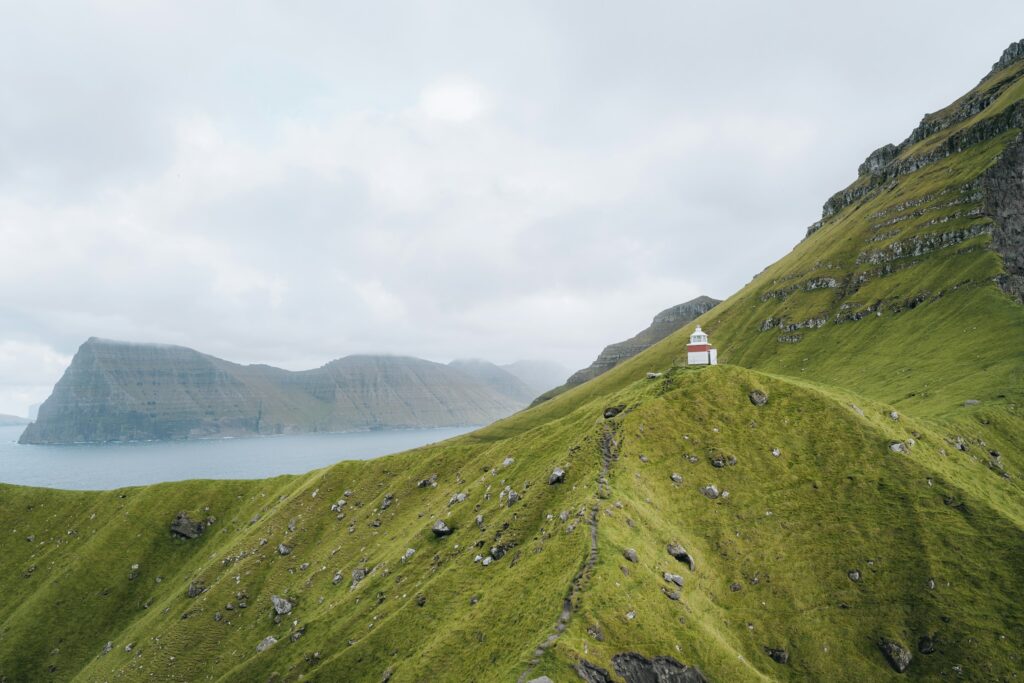
The weather here changes by the minute. One moment you’re squinting against brilliant sunshine, the next you’re dodging rain squalls that seem to appear from nowhere. When the mist rolls in and the light breaks through, rainbows appear like magic across the landscape.
The island itself, nicknamed the flute for its long, narrow shape punctuated by tunnels like finger holes, has no hotels and just four tiny villages with a combined population of fewer than 100 residents. The whole island is less than 20 kilometres long but feels like its own separate world.
Getting there: Getting there isn’t exactly straightforward. First, take the small ferry from Klaksvík (which doesn’t run in bad weather, incidentally), then a local bus or taxi to the northernmost village of Trøllanes. From there, it’s a challenging hour-long hike across private farmland (permission required) and along precarious clifftops. There’s no proper path marked, just a rough track across the fields where sheep wander freely. The lighthouse keeper’s cottage isn’t open to visitors, but the panoramic views of neighbouring islands and the turbulent sea below make this journey worthwhile.
Read: Faroe Islands first timers: 15 things to know
Graciosa Island, Canary Islands, Spain
You won’t find La Graciosa (the Spanish for the graceful) in many guidebooks, which is exactly how the locals like it. This tiny volcanic island sits just off Lanzarote’s coast, officially joining the Canary Islands family only in 2018, though it’s been quietly doing its own thing for centuries. Indeed, while millions flock to Tenerife and Gran Canaria , this neighbouring island remains largely untouched. It’s one of the Canary Islands best kept secrets.
La Graciosa was only connected to electricity in the 1970s and remains free of paved roads. Its stark volcanic landscapes, pristine beaches, and crystalline waters represent the Canaries as they once were, before mass tourism transformed the archipelago.
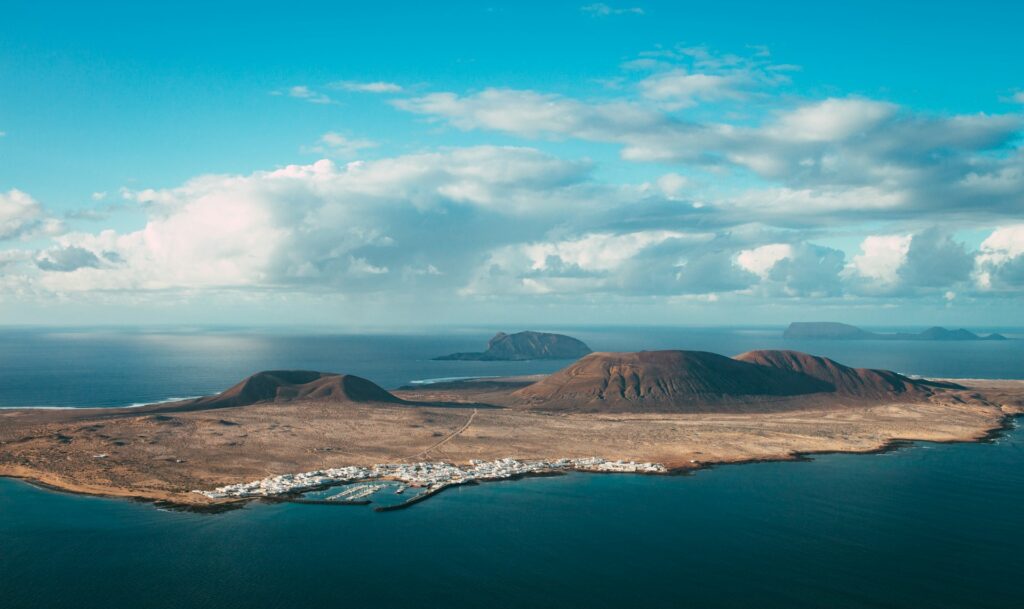
With less than 750 inhabitants, the island is home to two small picturesque villages, Pedro Barba and Caleta del Sebo, nearly all of them reside in the latter. Here you’ll find a handful of small guesthouses and apartments to rent, a few cafés serving fresh fish, plus the essentials: a supermarket, a church, and even a discoteca for weekend nights. Pedro Barba is mostly made up of summer homes, with only a handful of permanent residents.
If you’re a cycling enthusiast, a visit to the island could be the ideal getaway. It’s been attracting a handful of cyclists and triathletes for a while now, drawn to its dirt roads, flat terrain and other-worldly scenery.
Getting there: Fly to Lanzarote, then travel to Órzola in the north. From there, take the small ferry (30 minutes) to Caleta del Sebo, Graciosa’s only town. Once on the island, transport options are limited to bicycles, walking, or hiring one of the few 4×4 taxis that navigate the sandy tracks. The island’s remoteness is preserved by a strict limit on visitor numbers.
Saint Kilda Archipelago, Scotland
The most remote part of the British Isles, the St Kilda archipelago lies 64km west of the already isolated Outer Hebrides. It’s Britain’s loneliest place, abandoned in 1930 when the last 36 residents finally gave up battling the Atlantic. The statistics alone speak to Saint Kilda’s otherworldly remoteness: further from civilisation than anywhere else in the British Isles, it’s closer to Iceland than to London.
Today, Saint Kilda serves as a living museum and research station. The National Trust for Scotland maintains the village ruins and operates a small research facility studying everything from climate change to seabird behaviour. Military personnel from the nearby radar station provide the only year-round human presence, maintaining equipment that tracks objects in the North Atlantic skies.
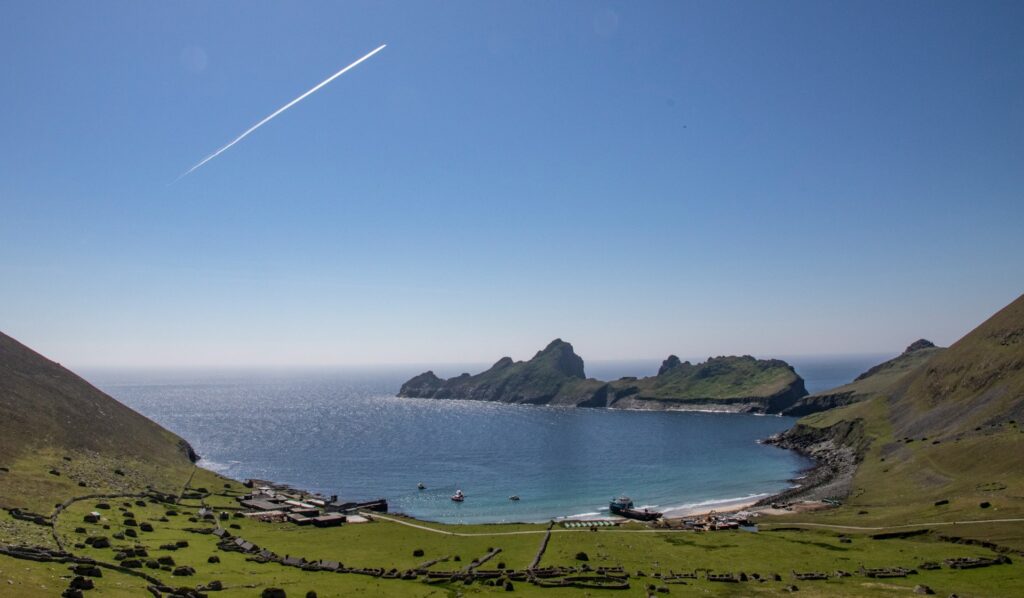
The human story here is extraordinary—archaeologists have found evidence of 4,000 years of continuous habitation. Islanders developed unique skills, scaling impossible cliffs to harvest seabirds and eggs. They even had a postal service: messages tied to wooden boats and launched into the Atlantic currents.
Getting there: Day trips run from Harris and Lewis during summer months, but these are frequently cancelled due to Atlantic storms. For those with deeper pockets, you can book a private jet to Benbecula in the Outer Hebrides and arrange a private boat transfer from there, weather permitting.
For a more immersive experience, volunteer work parties with the National Trust for Scotland offer the chance to stay on Hirta for one or two weeks, assisting with conservation work while experiencing the wild beauty of this extraordinary place firsthand. Be warned: the crossing is notoriously rough, with seasickness virtually guaranteed.
Svaneti Towers, Ushguli, Georgia
Tucked away in Georgia’s remote Svaneti region, Ushguli clings to the mountainside at over 2,000 metres above sea level. It’s one of Europe’s highest year-round communities, and walking through its narrow lanes feels like stepping back centuries.
The village’s most striking feature is its collection of medieval watchtowers, known as the Svaneti Towers. Around 30 of them dot the landscape like stone sentries. The towers come in all shapes and sizes – some squat and sturdy, others reaching skyward like stone fingers. As the sun sets, their honey-coloured stonework glows against the pristine mountain backdrop.
Local families built these between the 9th and 12th centuries as refuges during the constant raids that plagued the region. When enemies approached, whole families would grab their valuables and climb to the tower tops, waiting out the danger in relative safety.
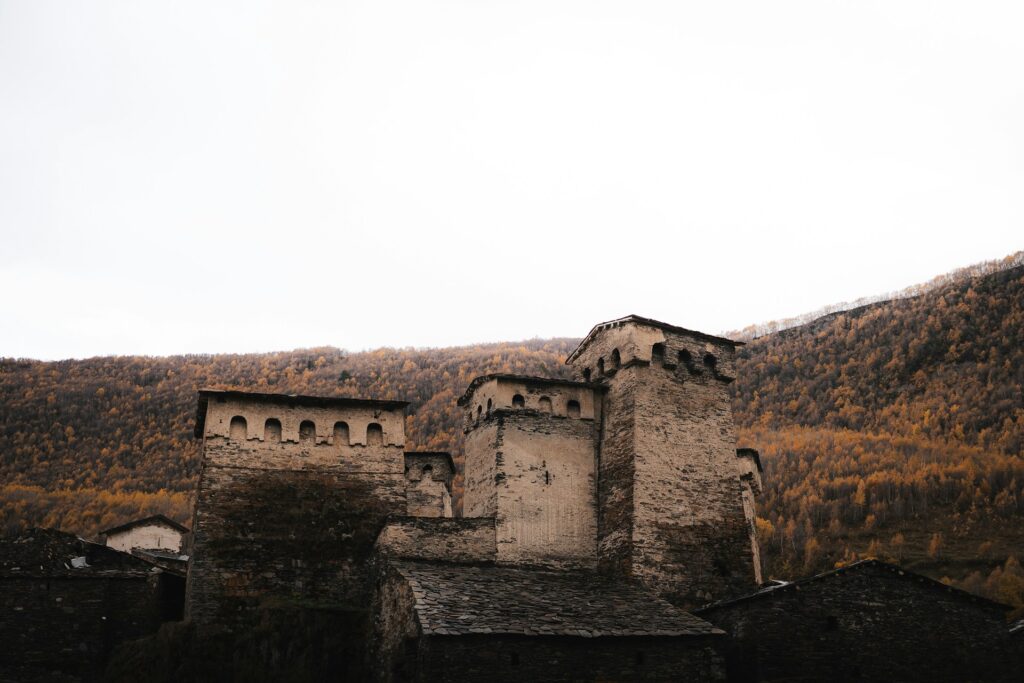
Today, Ushguli has found a gentler way to make a living. Many villagers rent out spare rooms in their homes for just a few pounds a night, while others let visitors pitch tents in their gardens. The Georgian hospitality is unrivalled and locals will feed you hearty Georgian fare—think cheese-stuffed khachapuri bread, rich stews, and local wine to wash it all down.
Despite being designated a UNESCO World Heritage site, the village hasn’t lost its authentic feel. Families dig for potatoes at the foot of towers, a couple of tiny museums offer glimpses into traditional Svan life, with the ethnographic collection showing how families once lived in these stone houses. The setting, surrounded by snow-capped peaks and ancient towers, feels almost mythical—like something from a medieval legend that somehow survived into the modern world.
Getting there: The Greater Caucasus Mountains are a hiker’s dream and many hike the Transcaucasian Trail which spans 932 miles across Georgia, Armenia and some of Azerbaijan. This medieval defence tower is one of the stops offs on this trek
If you’re going by car, the drive from Tbilisi up to the Upper Svaneti region is a bone-rattling journey along rutted mountain roads. The journey requires a sturdy 4×4 vehicle and a local driver familiar with the treacherous unpaved track, which becomes impassable in winter. Alternatively, multi-day horse treks through the mountains offer an authentic experience of this extraordinary region.
The Blue Cave, Kastellorizo, Greece
Kastellorizo sits alone in the far eastern Aegean, closer to Turkey than to anywhere else Greek. It barely registers on most maps, which is precisely why it’s remained unspoilt. Indeed, Kastellorizo feels worlds away from the popular Greek islands and lying just 2km from the Turkish coast, you’d think you could swim there if the currents weren’t lethal.
What was once a thriving sponge-diving community of 10,000 is now home to just 500 residents. Sailing into the harbour feels like discovering a secret. The tiny port town—also called Kastellorizo, or simply ‘Chora’ — unfolds like a perfectly preserved postcard. Pastel-coloured houses crowd the waterfront, while the crumbling remains of a Venetian fortress watch over an old Ottoman mosque from the hillside above.
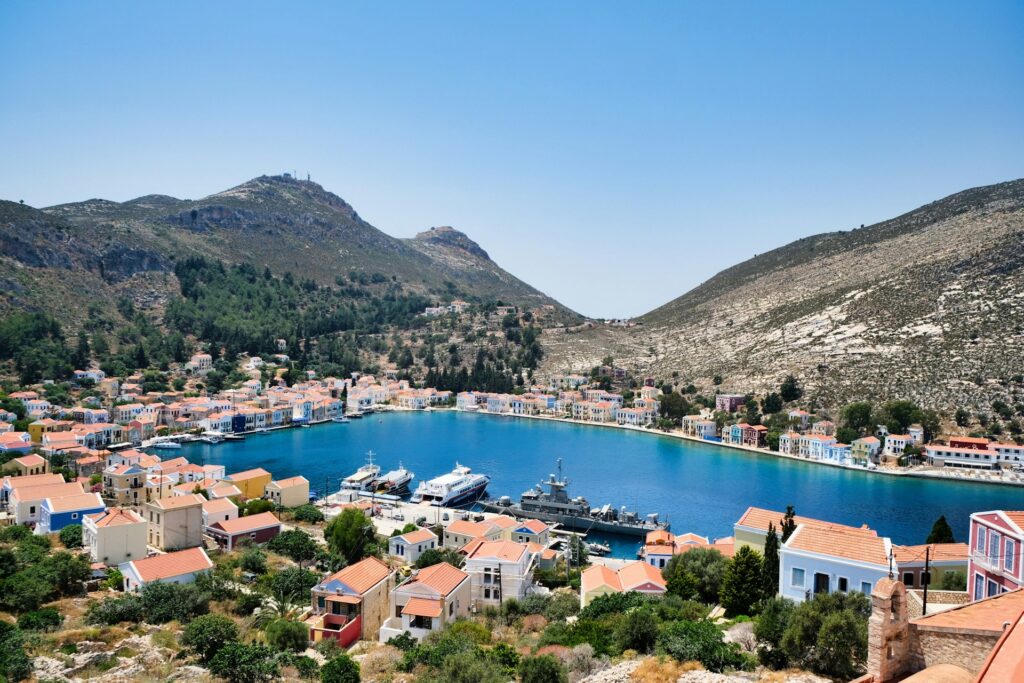
There’s not much to do here in the conventional sense, which is precisely the point. You can wander the empty plateau above town, catching glimpses of Turkey’s coastline just across the water. Its star attraction is the Blue Cave, larger than Capri’s famous grotto and illuminated by an otherworldly blue light created when sunlight refracts through the crystal-clear water. Locals call it ‘phokiali’ (Greek for seal’s refuge).
Aside from a trip to the Blue Cave, the food alone justifies the journey. Harbourside tavernas serve whatever the fishermen brought in that morning—grouper, sea bass, sometimes lobster—along with local delicacies like bright orange sea urchin roe.
Getting there: There are infrequent flights to Kastellorizo from Rhodes or a long ferry journey from the mainland. The Blue Cave is accessible only by small boat, and only when sea conditions permit.
Foula, Shetland Islands, Scotland
Rising from the tempestuous waters of the North Atlantic like some ancient fortress, Foula stands as one of Britain’s last bastions of true isolation. This wind-scoured island, whose Old Norse name translates to ‘bird island’, sits in splendid solitude thirty kilometres west of Shetland’s mainland, closer to Norway than to London and feeling every bit as remote as its coordinates suggest.
Home to just thirty hardy souls who’ve chosen to make their lives on this 13-square-kilometre chunk of rock and peat, Foula operates according to its own rhythms and rules. The island still follows the old Julian calendar, celebrating Christmas on January 6th—a quaint tradition that speaks to Foula’s stubborn resistance to outside influence.
The landscape here is nothing short of spectacular. Five dramatic hills dominate the terrain, their peaks often shrouded in mist that rolls in from the Atlantic without warning. But it’s the Kame of Foula that truly takes your breath away—a sheer cliff face that plunges 376 metres straight into the churning sea below, making it one of Britain’s highest sea cliffs and a sight that humbles even the most seasoned traveller.
Read: 9 Scottish Island Holidays Ideal For Wildlife, Whisky & Wee Adventures
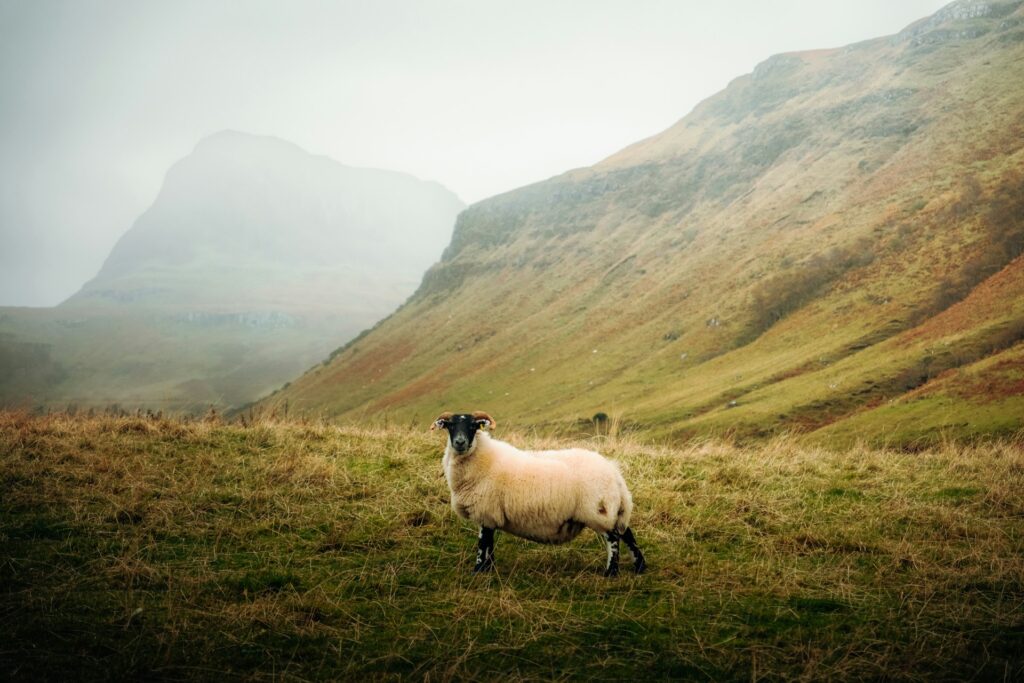
Great skuas (locals call them bonxies) nest here in massive numbers and have zero fear of humans. They’ll dive-bomb your head if you get too close, whilst puffins provide comic relief as they tumble about in the fierce winds. June through August is prime time for seabirds, though the weather is temperamental to say the least.
Getting there: Reaching Foula requires patience, flexibility, and a strong stomach. The ferry “Good Shepherd IV” operates three times weekly from Walls on Shetland’s west mainland, but rough seas frequently force cancellations. The crossing takes two and a half hours in good conditions.
Alternatively, a twice-weekly eight-seat plane from Tingwall Airport offers spectacular views but is equally at the mercy of Foula’s notoriously changeable weather. Visitors should be prepared for the possibility of extended stays if transport links are disrupted.
Seceda Ridgeline, Dolomites, Italy
In the heart of South Tyrol, where Austrian sensibilities blend seamlessly with Italian passion, the Seceda ridgeline presents some of the most otherworldly mountain scenery in all of Europe. This razor-sharp chain of pale limestone peaks, sculpted by millions of years of geological drama, creates a skyline so surreal it appears almost computer-generated against the endless blue Alpine sky.
Seceda’s serrated ridgeline stretches for kilometres, each peak more dramatic than the last. The famous knife-edge formations—known locally as the Teeth of Seceda—create a horizon that looks like the spine of some sleeping dragon.
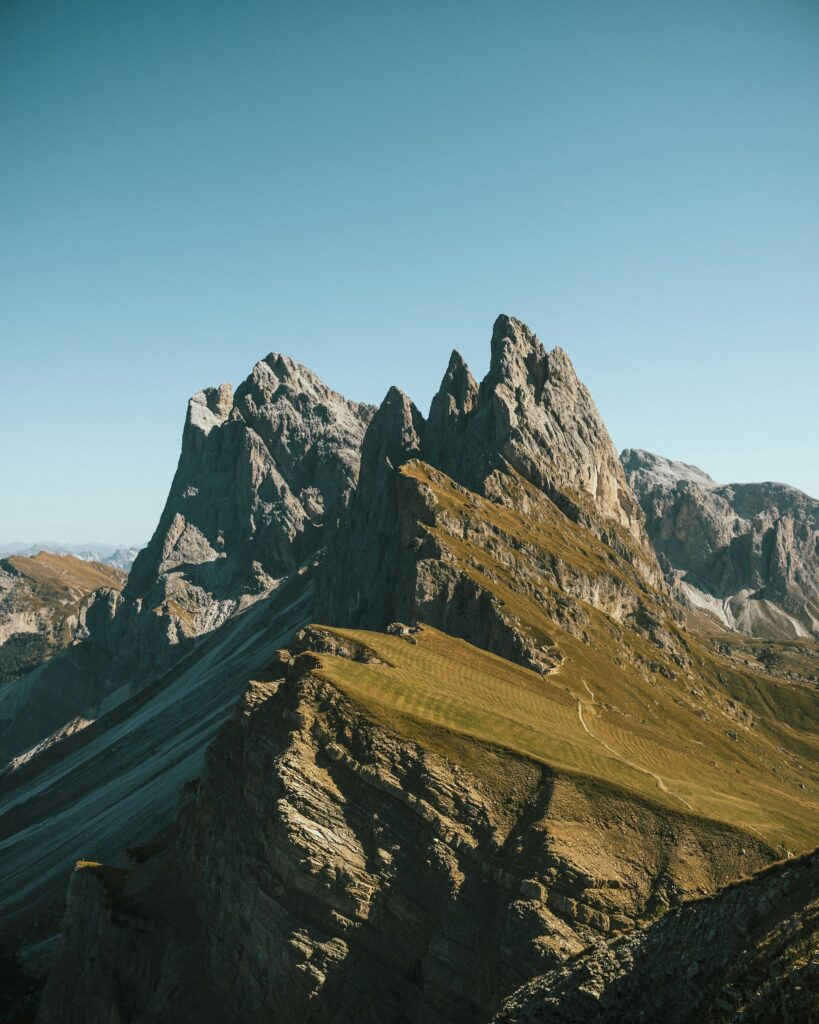
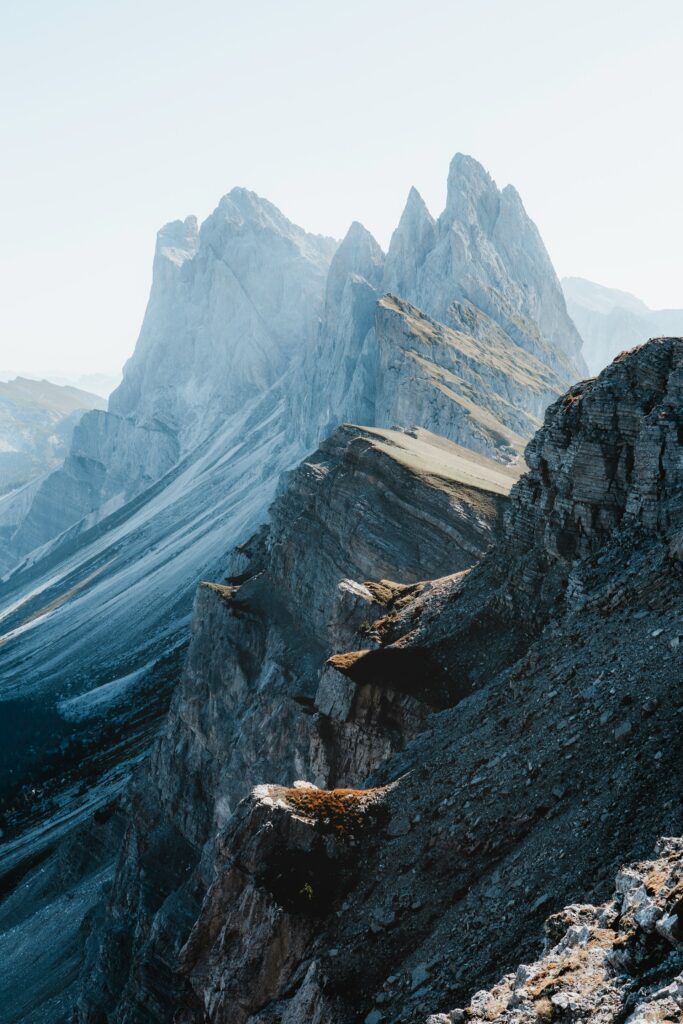
Local Alpine huts, or rifugi, dot the landscape like tiny refuges from another era. These mountain shelters serve hearty South Tyrolean fare—think speck and cheese plates, warming goulash, and strong Alpine schnapps—whilst offering basic accommodation for those brave enough to spend a night amongst the peaks. Sunrise from Seceda’s ridgeline, watched from the warmth of a rifugio with a steaming cup of coffee in hand, ranks among Europe’s most spectacular natural shows.
Getting there: While cable cars operate in summer and winter seasons from Ortisei, the most rewarding approach is on foot. Hiking from the villages of the Val Gardena requires substantial effort and proper equipment but offers constantly changing perspectives of these magnificent mountains. For the truly committed, booking a night at one of the mountain rifugi (huts) allows you to experience dawn breaking over the ridgeline—a moment of transcendent beauty shared with just a handful of other adventurers.
Covão dos Conchos, Serra da Estrela, Portugal
Deep in Portugal’s highest mountain range, the Serra da Estrela, sits one of Europe’s most peculiar and photogenic structures – a seemingly bottomless hole in the middle of a pristine mountain lake. The Covão dos Conchos looks like something from a fantasy novel: a perfectly circular opening in the lagoon’s surface that swallows the water in a mesmerising vortex before sending it through a 1,500-metre tunnel to the Lagoa Comprida dam.
Built in 1955 as part of a hydroelectric scheme, this ‘bellmouth spillway’ was engineered to prevent flooding, but it’s since become an accidental work of art. The structure sits at 1,400 metres elevation, surrounded by rocky outcrops and the barren, windswept beauty of Portugal’s highest peaks.
The lake itself changes character with the seasons. In spring, snowmelt fills it to the brim and the spillway roars with power. By late summer, water levels drop and the full height of the concrete funnel becomes visible – a stark industrial intrusion in an otherwise untamed landscape. When morning mist rolls across the water’s surface, the whole scene takes on an eerie, otherworldly quality.
The surrounding Serra da Estrela Natural Park is Portugal’s largest protected area, home to endemic flora including the rare Serra da Estrela narcissus, and fauna like Iberian wolves (though you’d be exceptionally lucky to spot one). In winter, this is Portugal’s only ski resort area, but in the warmer months it transforms into a hiker’s paradise.
Getting there: From the nearest town of Manteigas, it’s a challenging 11-kilometre trek through rough mountain terrain with no marked trails for much of the route. A 4×4 can get you somewhat closer along rutted dirt tracks, but the final approach must be made on foot across boggy ground and over rocky outcrops. GPS coordinates are essential, as there’s virtually no signage and the lake sits in a remote bowl invisible until you’re almost upon it. Weather changes rapidly here – bring layers and waterproofs even in summer. This is not a walk for the unprepared.
The Bottom Line
These destinations offer something increasingly precious in our hyperconnected world—genuine remoteness and the deep satisfaction that comes from reaching places that demand effort and commitment. They remind us that sometimes the most memorable travel experiences are those that can’t be reached by simply stepping off a tour bus or following the crowd. In an age of overtourism, these hidden corners of Europe protect their secrets by remaining gloriously, determinedly difficult to reach.


